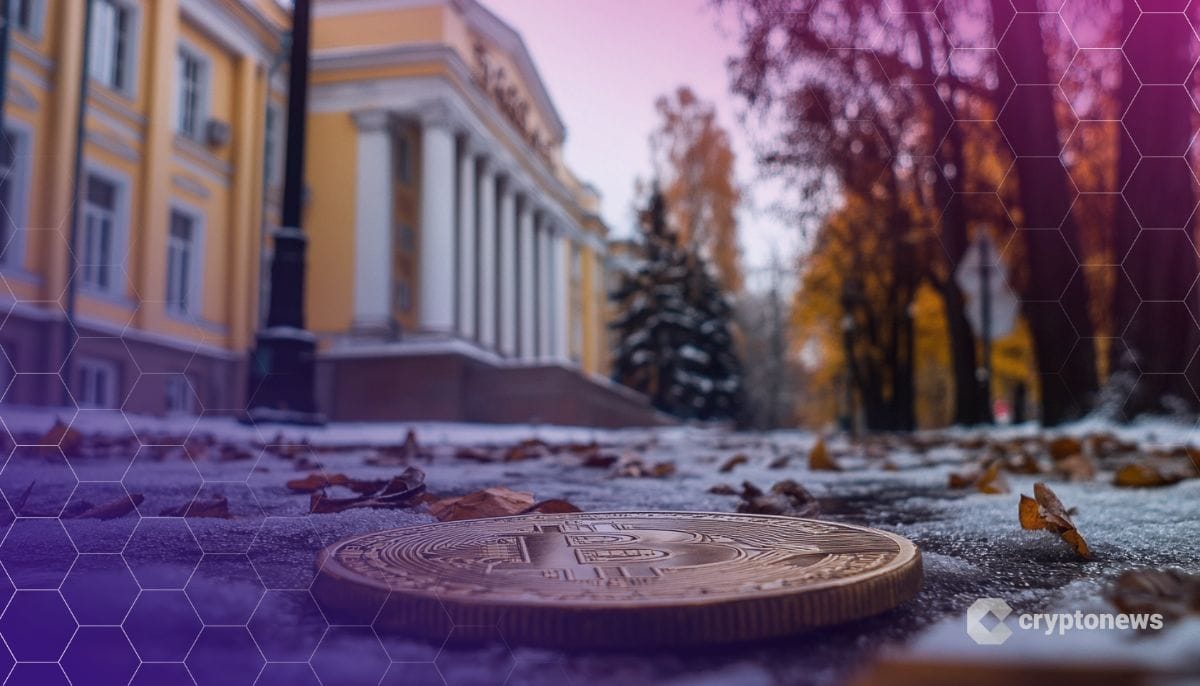Last updated:
 Why Trust Cryptonews
Why Trust Cryptonews
Ad Disclosure
We believe in full transparency with our readers. Some of our content includes affiliate links, and we may earn a commission through these partnerships.

The Russian Central Bank claims that it is winning its battle against peer-to-peer (P2P) crypto exchanges.
According to RBC, the bank says its “fight against the illegal circulation of cryptocurrencies in Russia” is proving “successful.”
The bank claimed that the number of high-risk P2P transactions conducted in the nation “has decreased by 2.8 times” compared to 2023 figures.
Russian Central Bank: P2P Trading Crackdown
The Central Bank made its claims in its latest financial stability review. The review focuses on economic results for the second and third quarters of FY2024.

The bank claimed that it has been working on joint efforts with the nation’s commercial banks this year.
Together, the regulator and the banks say they have blocked scores of transactions linked to P2P trading platforms.
Russia’s crypto exchange market remains completely unregulated. Although Moscow has introduced several crypto-specific laws in the second half of 2024, none have tackled exchange-related issues.
The exchange market is also highly fragmented. It is also rife with shadowy players and firms that say they can use crypto to transfer cash across borders.
As such, the P2P market has ballooned in size. In June 2023, a cybersecurity platform claimed Russian traders could access some “$296 million” worth of trades per day.
‘High Priority’
In its report, the Russian Central Bank claimed that underground crypto exchanges and P2P operators “usually use payment cards or accounts issued to fictitious individuals” to conduct “settlements.”
The bank claimed that “counteracting such schemes” had “become a high priority.” It claimed it was now in “constant cooperation” with credit institutions, and said it provides banks with “assistance” in blocking transfers.
And the bank said that most Russians use “anonymous crypto exchanges and P2P exchange platforms” as their “main channels” for buying crypto.
Despite its claims, however, the bank also conceded that the “volume of cryptoasset flows attributable to Russian investors” actually increased on FY2023 figures by around 18%.
The regulator conceded that Russians transacted some $44.8 billion worth of crypto in the same time period.
And it said that the volume of web traffic from Russian IP addresses on global crypto platform sites “increased by 56.5%, to 166.9 million visits.”
Russian visitors now account for 7.5% of all visitors to major global crypto exchange platforms, a rise of 1.3% since it last released figures.
Russians Remain Bitcoin-keen, Says Bank
In the third quarter of 2024, the bank claimed, the “estimated balances of Russians’ crypto wallet holdings” (on exchanges) decreased by 16% compared to March.
Russians hold around $6.1 billion in these wallets, the bank claims. Of this, 69% of these coins are Bitcoin (BTC), with the remainder held in Ethereum (21%) and stablecoins (10%).
The bank said that more Russians are now holding their coins on exchanges because they feel there has been a “decrease in the level of volatility of the crypto market” in recent years.
It added that Russian traders expect a long-term pattern of “continued growth in cryptocurrency prices.”
They foresee an easing of crypto and monetary policy in the United States and the “excitement around memecoins” as a contributing factor.
And the bank added that much chat app-lined software was now using crypto to distribute rewards to their users.
However, the regulator said that these “projects,” are “like memecoins,” in that “although they attract new users to the crypto asset market” they have a “low capitalization” “relative to the greater crypto market.”




















